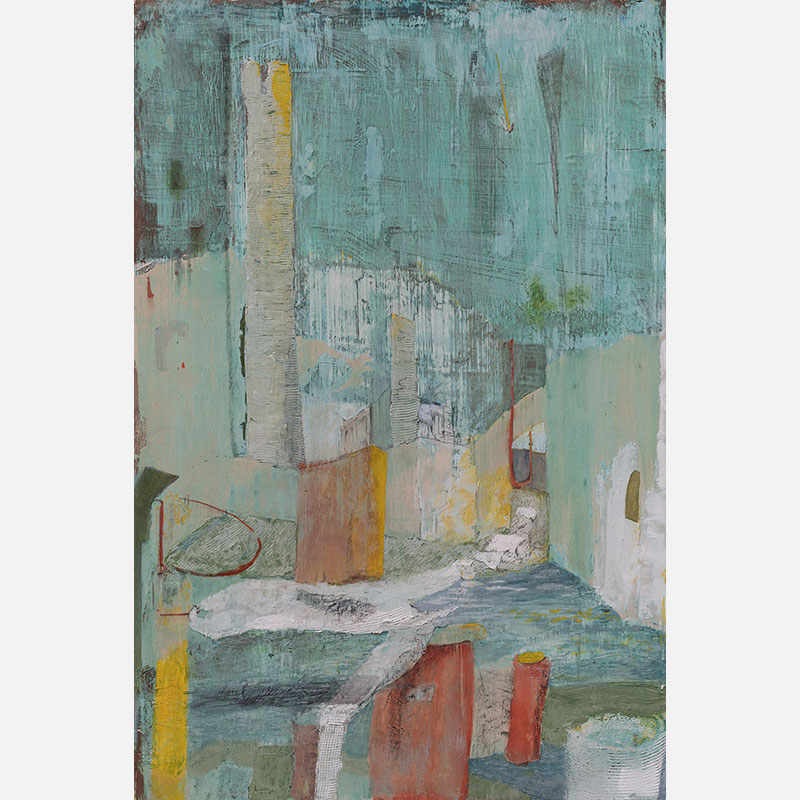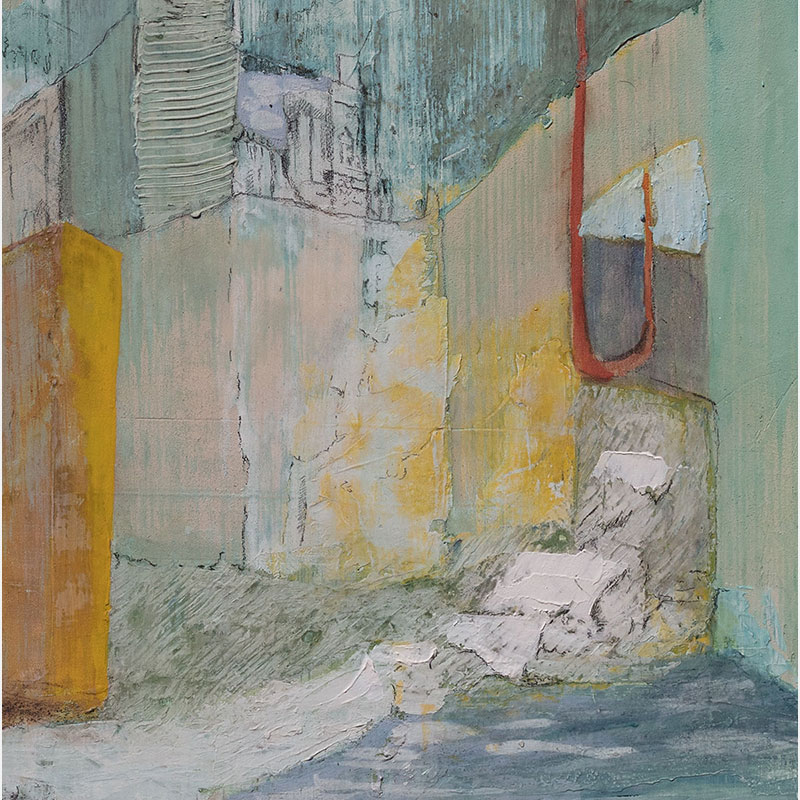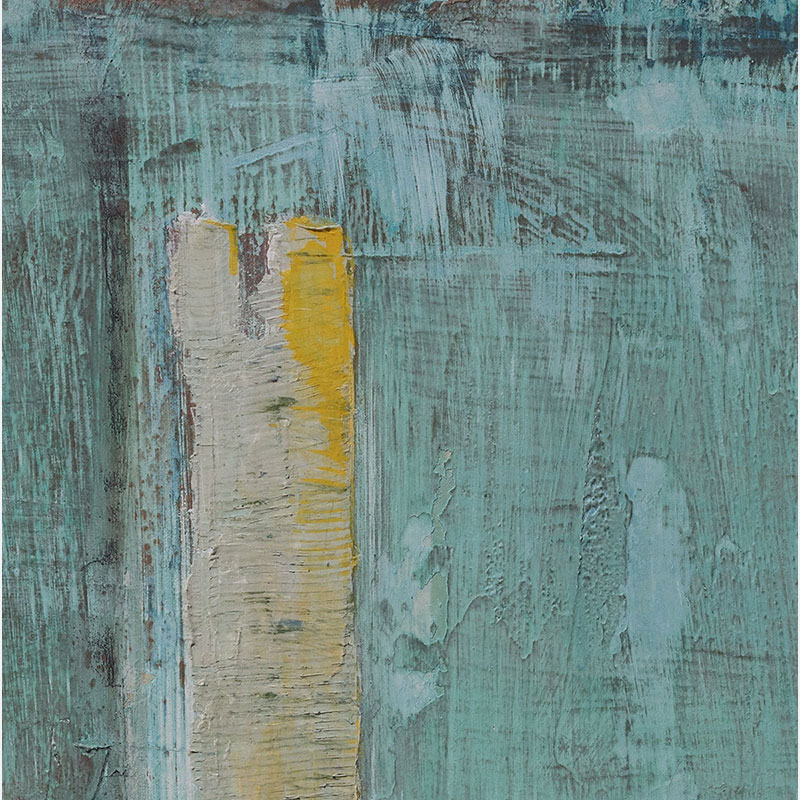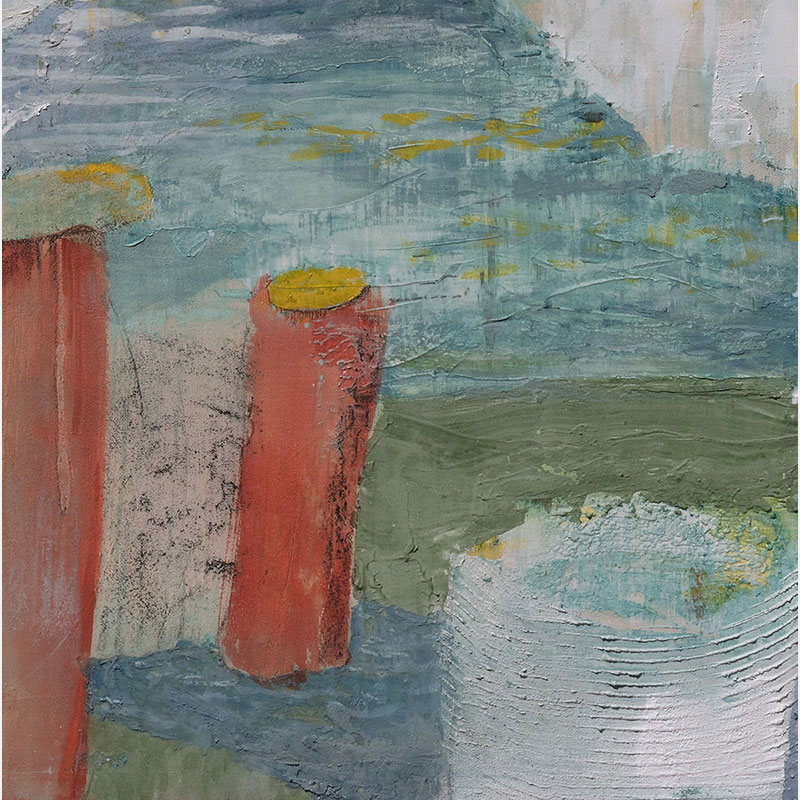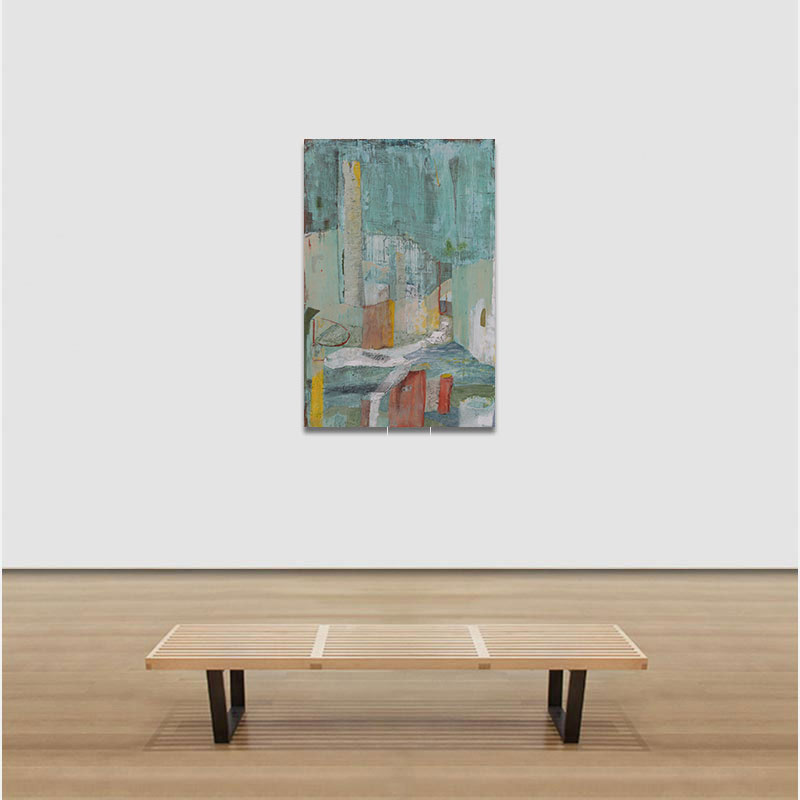EXHIBITION
AN ALCHEMY OF MATTER
Gregory Kitterle:
Patina Experiment #9, 2025
Fresco & Patina on Canvas Mounted on Panel
48 x 32 in
122 x 81 cm
US $ 6,500
In Patina Experiment #9, Kitterle conjures a landscape of weathered walls and architectural remnants, where muted reds, yellows, and greys emerge against a turquoise ground. The surface feels less painted than unearthed, marked by scraping, layering, and traces of repair. It recalls ruins suspended between endurance and collapse, where abstraction meets the quiet persistence of history. ...more
Go to Artwork: NEXT PREV ALL
